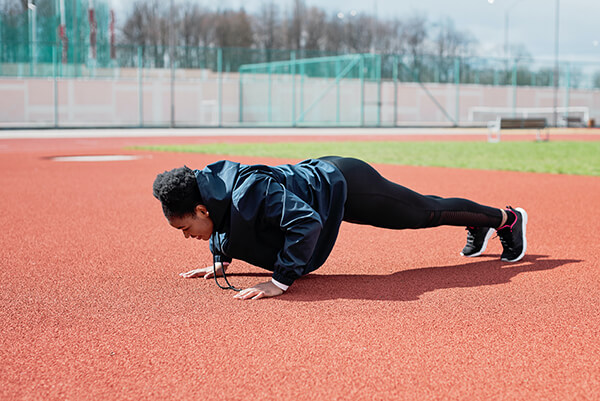Ease into spring activity safely
Warmer weather is beginning to gradually creep into the Champlain Valley, and with it comes the natural desire for us to get outside and become more physically active. While this is a wonderful change of pace after a long and cold winter, it is important to be aware of keeping our bodies safe and avoiding doing too much too soon.

The transition from winter to spring is a common time for orthopedists and physical therapists to see an influx of overuse injuries such as sprains, tendonitis and muscle strains, usually as a result of people doing more than their bodies are ready for. Here are a few tips to help get you moving safely so that you can enjoy being active in the months ahead:
Pace yourself
If you are trying an activity you have not done since last summer or fall, start small and slowly build. A common denominator to measure is the time spent doing an activity. For example, 10 to 20 minutes is a good starting point, and then adding five- to 10-minute increments each week, as tolerated. Remember that you may not experience pain while doing an activity, but later that day or the next morning it can catch up with you. That’s why it is important to avoid spending multiple hours on a new activity, even if it is feeling good in the moment.
Dynamic and static stretching
There are two types of stretching that can be helpful for avoiding injury and remaining pain free. Dynamic stretching is performed as a pre-activity warmup. It involves stretching with movement, such as kicking your heel towards your buttocks repeatedly, swinging your leg forward and backward, hugging your knee up to your chest alternately, rotating your trunk side to side and swinging your arms forward and backward. Static stretching is performed as a post-activity cooldown. It involves coming into a stretch position and holding it for 30 to 60 seconds. Important muscles to target include your quadriceps (front of your thighs), hamstrings (back of your thighs), calf muscles, psoas (front of the hip) and lower back. There are a number of different ways to stretch these muscles, and it will vary from one person to the next which stretch is most appropriate. If you feel unsure as to how to perform dynamic and static stretches, meeting with a physical therapist or personal trainer for just a couple of sessions can get you set on the right path.
Listen to your body
No one knows your body better than you do, so trust your instincts and respond when your body is giving you signals that you are doing too much. Common complaints related to overuse injuries include sharp or throbbing pain, redness and swelling in the involved area. If this occurs, practice RICE: rest, ice, compression and elevation. Refrain from activity for at least two days, and try to elevate, ice and compress the area for 10 to 20 minutes, two to three times a day. If symptoms do not improve, contact your doctor, who may recommend a consult with a physical therapist or orthopedist. Overuse injuries, when not properly addressed, can often lead to chronic problems over time, so it is important to take action.
All of these tips apply not only to recreational sports, but yard work and gardening, too. Lower back and shoulder pain are common ailments of people who spend hours in their yard after being largely sedentary during the winter. For this type of activity, try to pace yourself by starting with shorter work sessions with breaks built in. Being a marathon gardener on day one is a common cause of overuse injuries for low back, shoulder or knee joints.
It is also worth mentioning that maintaining a regular exercise program during the winter months can go a long way toward preventing spring injuries.
Your body is your home, so give it the care and attention it deserves. Although it can be difficult to hold back on going for it when the sun is shining and the birds are calling, taking a thoughtful and measured approach will help ensure that you can enjoy moving your body all through the warmer months ahead.
Laurel Lakey is a physical therapist assistant at Dee Physical Therapy in Shelburne. She also has a bachelor’s in dance and is a certified yoga teacher. She lives in Charlotte with her husband, toddler daughter, dog and farm family of sheep and chickens. You can reach her by email.
